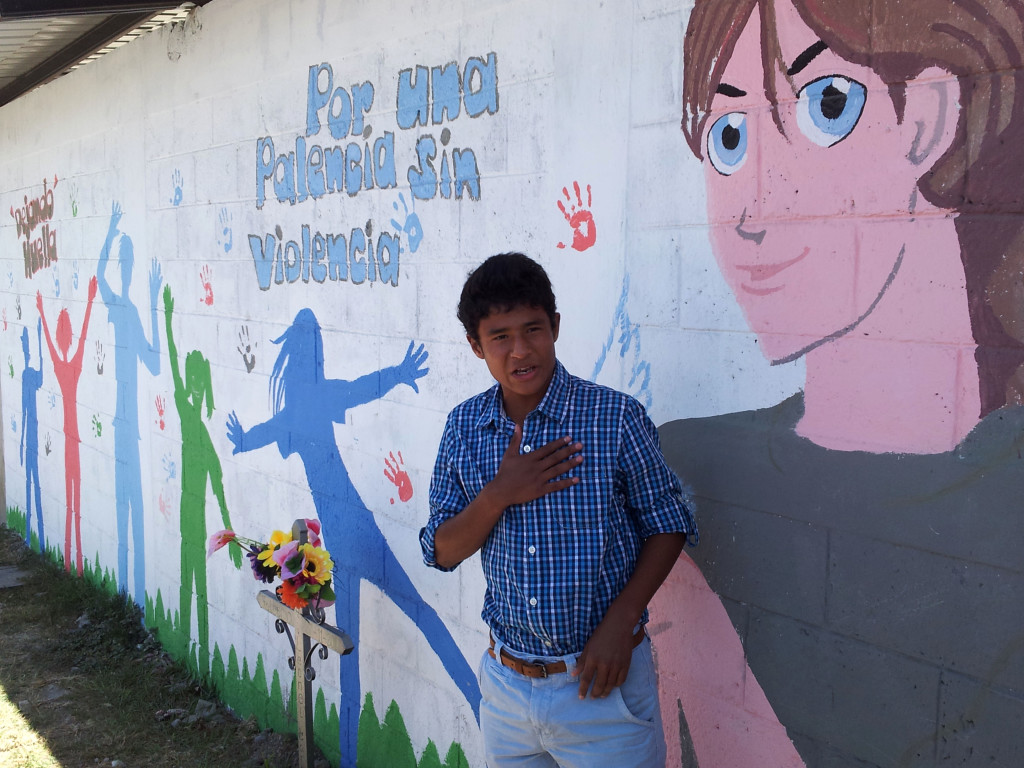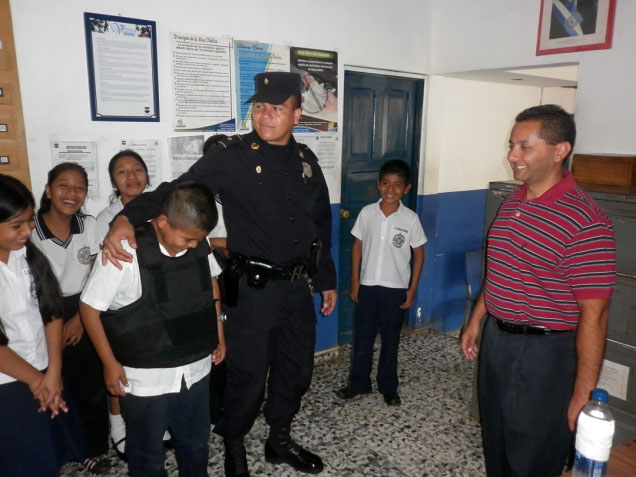
A youth in Palencia, Guatemala, who painted a mural on the wall in front of a stadium where one of his friends had been killed. The writing says “For a Palencia without Violence.” (ICMA)
Using social media and SMS messaging for crime prevention is a great idea. But if you are in parts of Latin America, chances are tech-savvy gangsters are playing the same game.
This is what one non-profit organization is finding out.
The International City/County Management Association (ICMA) is a non-profit organization that promotes good practices in crime prevention in Latin America. Its program, Municipal Partnerships for Violence Prevention in Central America (AMUPREV) implements violence prevention strategies and programs through city-to-city exchanges that include training and technical assistance for governments, local committees, community leaders, and police officers.
The group also encourages the use of social media and telephone SMS messaging to reach out to young people. “On a secondary level, we are reaching out to youth through these committees,” said Isabelle Bully-Omictin, Director for the group’s Latin America and Caribbean programs. “And so these committees can use text, they can use Twitter to reach out to young people.”
Social media communications are used to alert young people to skill-building activities, seminars, sports events or events relating to crime prevention. Bully-Omictin says this exchange helps her organization understand the issues kids are facing and what kind of violence is most prevalent in their lives so that these issues might be addressed at the municipal level.
That level of engagement enables ICMA to attract “young people who have never really been brought to the table before to make decisions on the future of their community,” said Bully-Omictin.

A a police officer from EL Salvador (in uniform) and the Chief of Police of Santa Ana, CA, take part in an exchange visit as part of a USAID-funded Project to familiarize kids with police work and establish a rapport. (ICMA)
“We bring in the police … There’s usually a relationship, you know, that’s not very positive with the police in many communities. And we’re bringing them into the process so that they can understand what the needs of the citizens are [and] citizens can understand what the role of the police is,” she said.
The problem is that gangsters are using the same technology to fight back and get to kids first.
Bully-Omictin says gang members in many Latin American countries have used texts to extort people. As a result, a lot of individuals don’t accept text messages from people or organizations they don’t know and would have to be contacted first to find out if they are willing to accept messages.
“That’s a big challenge because if you are setting up a database to try and provide information to people, that database is going to change,” she said, because people change phones frequently so that gangs and drug traffickers can’t track their telephone numbers.
If criminals get a hold of someone’s telephone number, Bully-Omictin says they typically “send the messages and try to get money from them or threaten their families.”
She believes this challenge can be overcome. But she says it is “something that one has to be aware of in the region.”
Where else does this happen and how do you fight back? Share your experience so that others may benefit.

One response to “LatAm Advocates, Gangs Take Crime Fight to Social Media”
Join or put up a group including victims and volunteers in your city. Make sure you are on the right team!!!!!! Learn some self-defense. Help others and others will help you. Most importantly, do not be a coward and also do not be reckless.